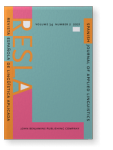Vol. 34:2 (2021) ► pp.611–641
Vol. 34:2 (2021) ► pp.611–641
Estudiantes de ELE en el ámbito universitario de la Economía
Análisis de estilos de aprendizaje e implicaciones didácticas
Con el objetivo de crear en los estudiantes de español de la Universidad de Ciencias Económicas y Empresariales de Viena (Wirtschaftsuniversität Wien) una conciencia sobre sus preferencias y modos de aprender y promover así su autonomía, se realizó un estudio para establecer sus perfiles de aprendizaje. Para ello, se adaptó al alemán el cuestionario CHAEA (Alonso et al., 1994) y se diseñó una encuesta digital. Tras una fase de pilotaje, un panel de cinco expertos revisó la traducción al alemán. En la recogida de datos se consiguió una muestra altamente significativa: 198 de un total de 744 estudiantes (26,6%). Los resultados muestran que entre los estudiantes de empresariales predominan básicamente dos perfiles de aprendizaje opuestos: la correlación de los estilos reflexivo-teórico y la correlación activo-pragmático. Esta dicotomía contrasta con los resultados de otras poblaciones y apunta a que los aprendientes podrían obtener beneficio de cualquier situación de aprendizaje, puesto que poseen estrategias de todos los estilos de aprendizaje.
Article outline
- 1.Introducción
- 2.Marco teórico
- 2.1Los estilos de aprendizaje
- 2.2Las diferencias individuales del aprendiz
- 3.Metodología y presupuestos básicos
- 3.1Objetivos y población de referencia
- 3.2Herramienta y diseño de la encuesta
- 3.3Pilotaje de la encuesta
- 3.4Recogida de datos
- 4.Análisis de los datos
- 4.1Baremo general abreviado
- 4.2Correlaciones entre los estilos de aprendizaje
- 4.3Influencia de los datos socioacadémicos en los estilos de aprendizaje
- 4.3.1Diferencias significativas entre grupos
- 4.3.2Factores que no implican diferencias en los estilos de aprendizaje
- 4.4Perfiles de aprendizaje
- 5.Discusión
- 6.Conclusiones
- Notas
-
Referencias
For any use beyond this license, please contact the publisher at [email protected].
Article language: Spanish
